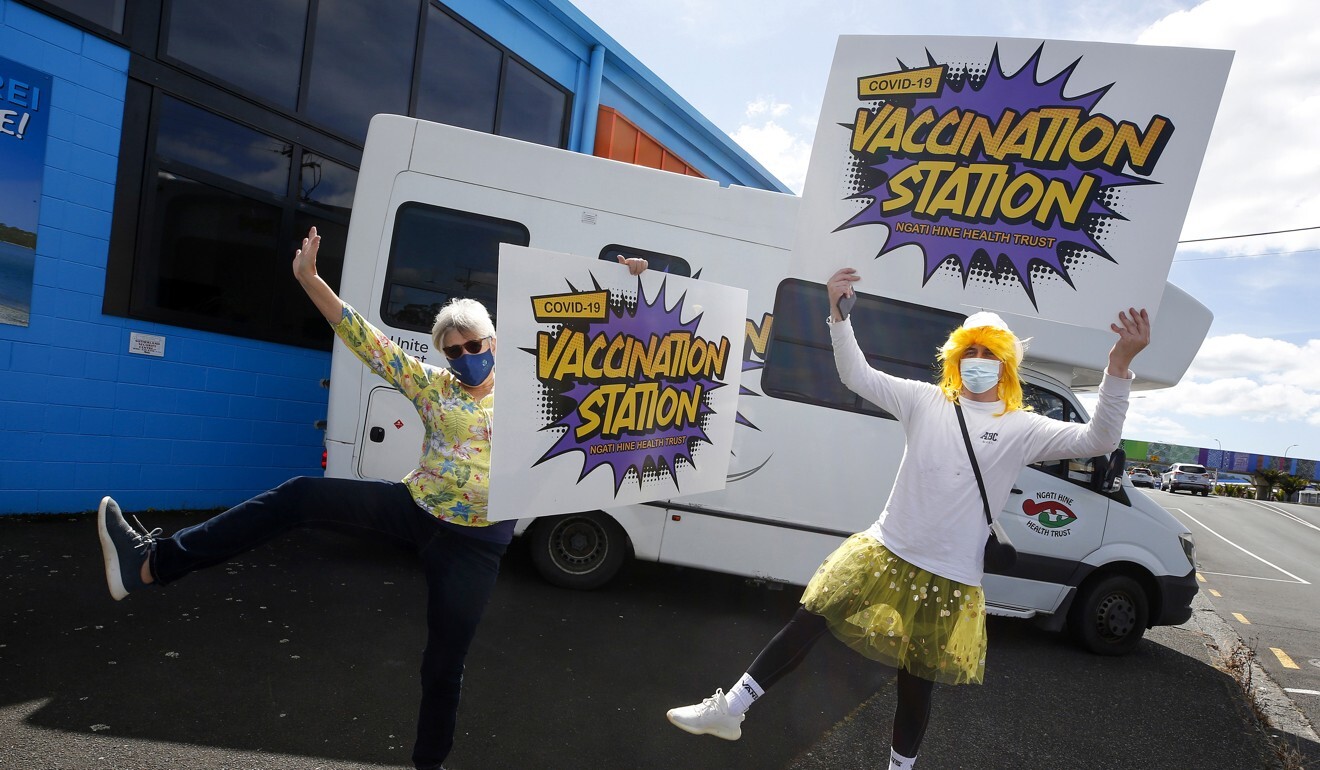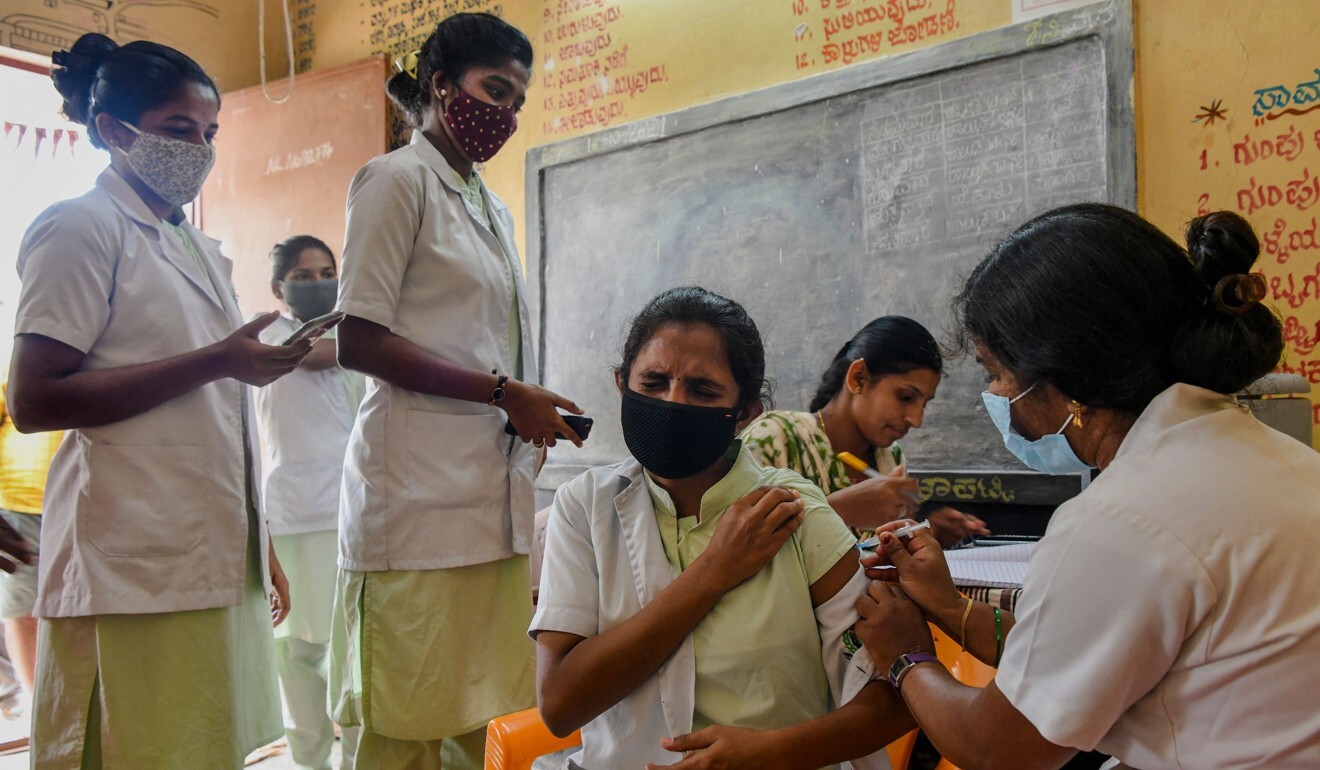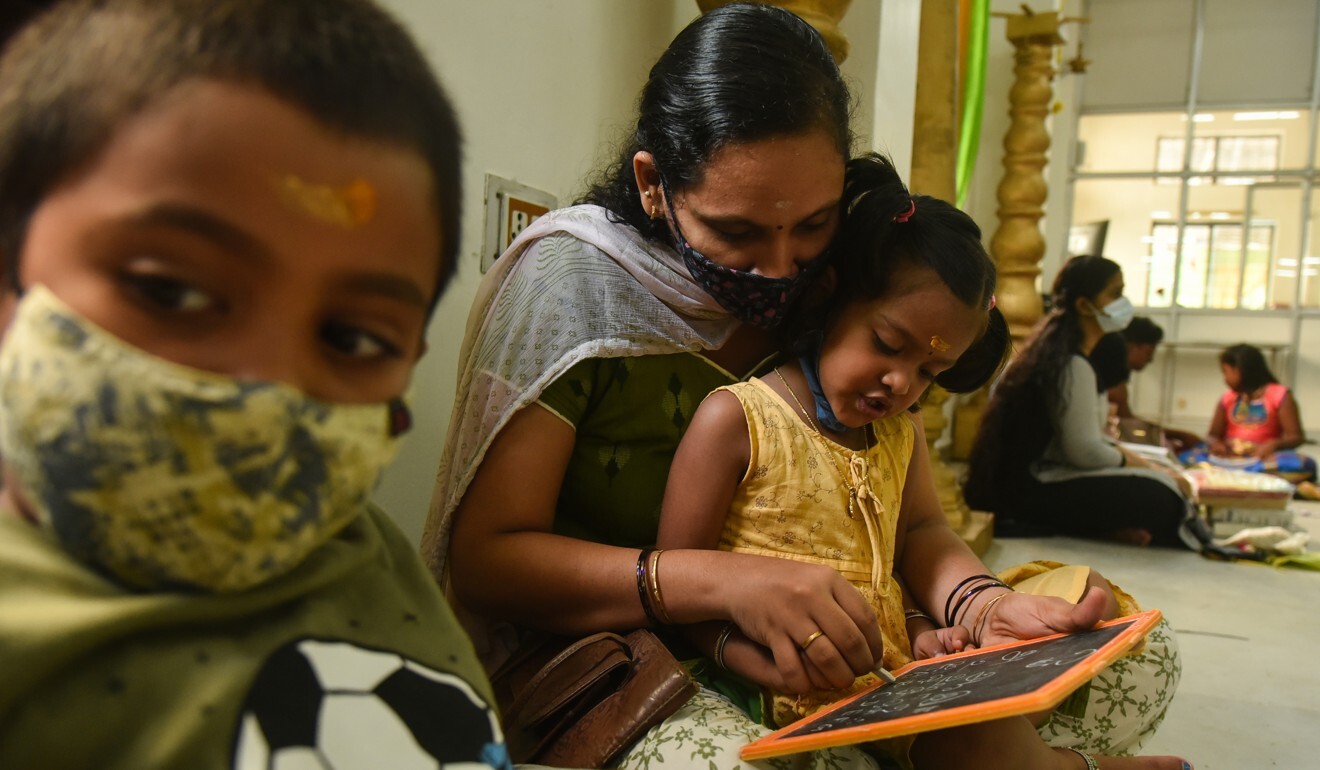
Coronavirus: Singapore expands no-quarantine scheme for vaccinated travellers despite reporting record cases
- The relaxed rules apply to visitors from eight countries, including the US, Britain, Canada, France and Italy, from Tuesday
- The travel lane scheme is part of a raft of new measures under the city state’s ‘Living with Covid-19’ strategy, even as it saw a record 3,994 cases
This came as its health ministry reported 3,994 new Covid-19 cases on Tuesday, the highest since the beginning of the pandemic, while it recorded seven new deaths from the disease.
Singapore Airlines said flights under the scheme were expected to depart from Amsterdam, London, Los Angeles and New York on Tuesday.
“We have seen very strong demand for our Vaccinated Travel Lane flights,” it said. “This is across all cabin classes, as well as various travel segments including leisure, families, and business travel.”
Passengers arriving as part of this scheme – which will include South Korea from November 15 – will not have to quarantine if they have been fully vaccinated and test negative for the virus before they depart and when they arrive.
To enable families to travel, Singapore has allowed entry to unvaccinated children aged 12 years and under if they are accompanied by someone flying under the scheme.
As Asian nations open up, where is travel allowed – and how can I do so safely?
In the almost deserted tourist district, restaurant manager Raj Samuel said he was optimistic about the potential for more business.
“I think it’s an excellent move by the country to help open up the economy … especially for the food and beverage sector,” the 36-year-old said.
Kylie Jens, a 29-year-old lawyer from New Zealand based in Singapore, said she was planning to go to Britain for Christmas under the scheme.
“Singapore is just such a small island, it’s nice to have a chance to get away and know that that’s possible pretty soon,” she said.

02:01
Malaysian man fails again in attempt to swim around pandemic travel restrictions
The city state initially fought the Covid-19 pandemic by shutting borders, imposing lockdowns of varying intensity and aggressive contact tracing. But with more than 80 per cent of the population fully vaccinated, authorities are keen to revive the economy.
“The Delta variant is highly infectious, and has spread all over the world. Even with the whole population vaccinated, we still will not be able to stamp it out,” he said. “Almost every country has accepted this reality.”
The regional offices of thousands of multinational corporations are in Singapore, which rely on its status as a business and aviation hub for their operations.
“We must continue to reopen our borders safely,” Lee said. “Companies and investors need to carry out regional and global business from Singapore. People working for them need to travel to earn a living.”
China takes soft approach to lockdown as coronavirus cases rise
Vaccinated travel is a “very significant step forward in re-establishing Singapore’s role as one of the Asia-Pacific’s leading international hubs for finance, regional headquartering and commercial aviation,” said Rajiv Biswas, Asia Pacific chief economist at IHS Markit.
The scheme may also provide a shot in the arm for the pandemic-hammered airline and tourism industries, analysts said. Before the pandemic, tourism accounted for about 5 per cent of Singapore’s GDP, said Song Seng Wun, a regional economist with CIMB Private Banking.
“We used to get 1.6 million tourists every month, our airport used to handle over a thousand flights a day pre-pandemic. Now it is just over 300 flights a day,” he said.
Statistics from the Singapore tourism board showed international visitor arrivals plunging to less than 2.8 million last year from a record 19.1 million in 2019.
Allowing in travellers without quarantine “instils a bit of fear” in some people, said Singaporean Simon Chow, 22, but added that people need to live with the virus. “At the end of the day, we’re a country that needs travel.”
New Zealand’s cases at highest level in 18 months
Prime Minister Jacinda Ardern told a press conference there were 94 new cases on Tuesday. The previous high was 89 in the first outbreak in April 2020.
“I know the highs and lows of cases is incredibly hard on people,” Ardern said. “But it‘s important to remember we are not powerless, we do have the ability to keep cases as low as we can.”
Auckland, the country‘s largest city with a population of about 1.7 million, has been under antivirus restrictions since August 18, after a single case was detected. The number of cases in the outbreak has now reached 2,099.

Tuesday‘s cases included 87 in Auckland and seven in the neighbouring region of Waikato.
Health officials were working to determine the connection of 53 of Tuesday‘s cases to the current outbreak, Ardern said.
She urged people to “stay home, save lives” and get vaccinated. “The rules matter for everyone,” the prime minister asserted.
About 85 per cent of the country‘s eligible population has received a first vaccine dose, while 67 per cent of New Zealand residents are fully vaccinated.
With a population of 5 million, New Zealand has reported about 4,700 cases of Covid-19 and 28 deaths since the onset of the pandemic.
Disparities emerge as India approaches 1 billion vaccine doses
In rural areas, government welfare is tied to having just one shot, with some having to travel long distances to return for the second dose. The large number of children yet to be covered by the vaccine programme also contributes, as does the comparatively long three-month gap health authorities advise between two doses of AstraZeneca’s shot, the predominant vaccine deployed in India.

“Adherence was noted to be an issue in all two-dose clinical trials run in India,” said Bhramar Mukherjee, a professor at the University of Michigan’s School of Public Health. “So the widening gap is due to both the spacing between two doses and non-adherence.”
The disparity is of concern because while infections have come off the highs reached in early May, India is still seeing more than 13,000 new cases every day and hundreds of deaths. Its overall fatality rate is second only to the US globally.
“When cases are as low as they are right now, the level of enthusiasm and the level of urgency to be vaccinated may wane,” said Brian Wahl, a New Delhi-based epidemiologist at the Johns Hopkins Bloomberg School of Public Health, which has worked on a campaign to boost vaccine confidence with a medical college in the north Indian city of Chandigarh.
In T-shirt factory of the world, Covid-19 puts clock back 20 years on child labour
Hesitancy is potentially acute in India’s countryside, where about two-thirds of the population lives with limited access to poorly funded health facilities. Many state governments have made the first-shot vaccination certificate a de facto requirement for accessing welfare programmes, including a food ration system that many poor and rural-dwelling families depend on. There are no equivalent requirements attached to receiving the second dose.
Government officials have been following up with people about their second shot, but it can be difficult to make them return as well as to convince those who are hesitant, said Wahl. “The further progress you make, the more challenging it is to get higher and higher levels of coverage.”
Nevertheless, Wahl expects the gap to narrow in coming weeks. A slew of Indians are slated to get their second AstraZeneca shot following a long wait to get their first in the summer, when the vaccine’s local manufacturer – the Serum Institute of India Ltd. – began to significantly gear up its production.

Also skewing the statistics is the fact that India is yet to deploy any vaccines for those under 18, some 40 per cent of India’s population. That may change soon. One locally developed inoculation has been approved for over 12s, but has not started to be administered yet. The country’s drug regulator is also currently reviewing another shot for those as young as two.
But risks remain. “In pockets where we are not seeing the same high level of immunisation, there’s a threat you could see smaller outbreaks,” Wahl said. “Immunity does wane over time. Continuing to keep up with the immunisation campaign is important.”
Malaysian officials could be sacked for refusing coronavirus jab
“On or after Nov 1, 2021, any officer who fails to comply with the Head of Department’s instructions may result in disciplinary action or termination of service,” the Public Service Department warned.
Virus tests and medical check-ups are to be offered to officials who refuse to be vaccinated for medical reasons, the department said.
The warning came after Prime Minister Ismail Sabri Yaakob said on Saturday that unvaccinated people would lose “privileges” such as being allowed to eat at restaurants, worship at mosques or travel domestically to see family.
Around 94 per cent of Malaysian adults have received two doses of vaccine, according to data from the Health Ministry, which reported around 5,700 new virus cases on Tuesday.
Around 2.4 million people in Malaysia have tested positive for the virus, out of a population of around 33 million, with the bulk of the cases reported since May this year. Almost 28,000 deaths in the country have been attributed to Covid-19.
Thailand approves US$1.64 billion more economic support measures
Thailand’s economy is expected to grow just 0.7 per cent this year after a 6.1 per cent contraction last year, the central bank forecast, with the key tourism sector still stumbling. Thailand earlier this year approved a further 500 billion baht borrowing plan to mitigate the impact of the epidemic.
Of the approved support, the government will offer 42 billion baht of cash transfers under an existing co-payment scheme between November and December, spokesman Thanakorn Wangboonkongchana told a news conference.
There will be 3 billion baht in e-vouchers for spenders under an existing scheme, about 8.1 billion baht for holders of state welfare cards and about 1.38 billion baht for those with special needs, he said.
“Every measure is to stimulate a recovering economy and to help people and business operators,” Thanakorn said. The government will have about 262 billion baht available under the borrowing plan following the support measures, he added.
‘Bangkok’s Hamptons’: why wealthy Thais are escaping to Hua Hin
The cabinet also approved a plan to allow foreigners on special visas to join a “flexible plus programme” and seek work permits, said deputy government spokeswoman Traisuree Traisoranakul.
But participants will be required to invest at least US$1 million within a year, either in property, companies and securities, she said.
The Tourism Authority of Thailand expects the programme to draw 10,000 foreigners with investment spending of about 300 billion baht, Traisuree said.
The move is in line with a wider plan to lure a million foreigners to help the economy.
Reporting by Agence France-Presse, Bloomberg, Reuters, DPA
